Is your balcony looking a bit barren? Home cooking tasting a little bland? I’ve got a two-in-one solution for you: grow your own flavourful herbs right on your balcony. Whether you’re an experienced gardener or it’s your first try at getting your thumbs green, a DIY balcony herb garden is a relatively simple, inexpensive and satisfying project. Ready to create your own herbaceous haven? Read on for my tips (plus a few bonus balcony gardening ideas).
Brian McCourt is a contractor, design expert and co-host of HGTV Canada’s Backyard Builds.
Published June 20, 2020, Updated April 21, 2021

Assess Your Situation
Before you do anything, take a close look at your balcony space. How much room do you have for containers? Plan out your garden design before you buy any supplies or plant anything. It’s also important to know yourself: if you’re the kind of person who begins a big project but never finishes, set yourself up for success by starting on the smaller side – maybe even with just one or two potted herbs.

Soak up the Sun
It’s a fact of life: plants need light to grow, so it’s critical to ensure your balcony has enough sun to help your herbs grow. This varies depending on what you’re growing, but most herbs need at least six hours of sunlight each day. If your balcony has only partial sun, plant herbs that do well in a bit of shade, like parsley.
Related: What’s Wrong With My Plant?
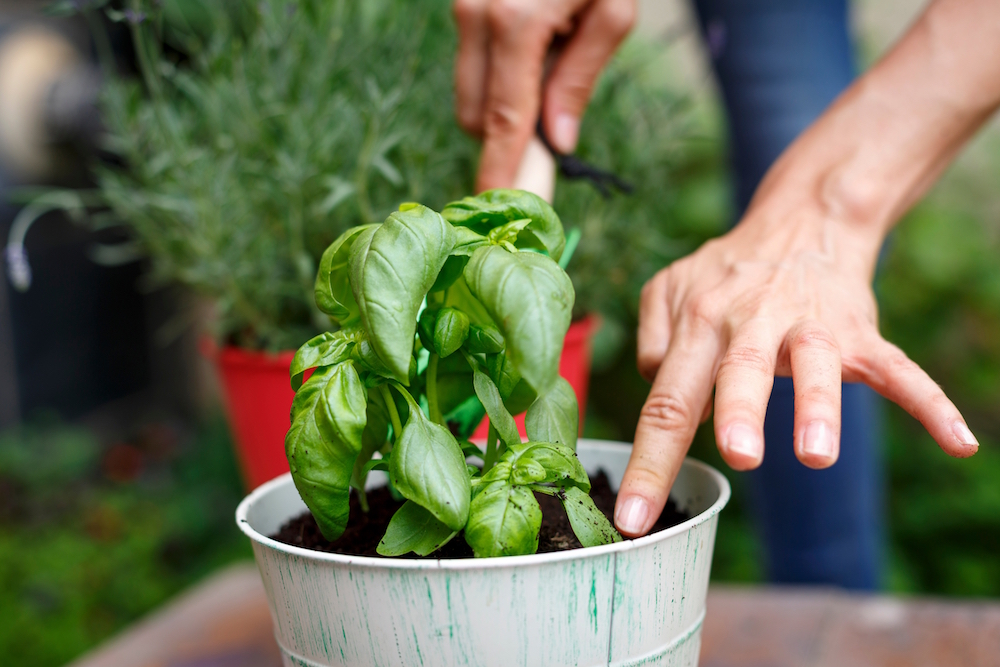
What Do You Want to Grow?
This is the fun part: deciding what exactly you’re going to grow. There are a wide variety of herbs you could try, but my advice is to choose mostly herbs that you know you like (and that you’ll actually use) – and maybe go for one variety that you’ve never tried. You never know: basil could be your new favourite food!
Related: From Backyard to Balcony: How to Build Your Own Greenhouse
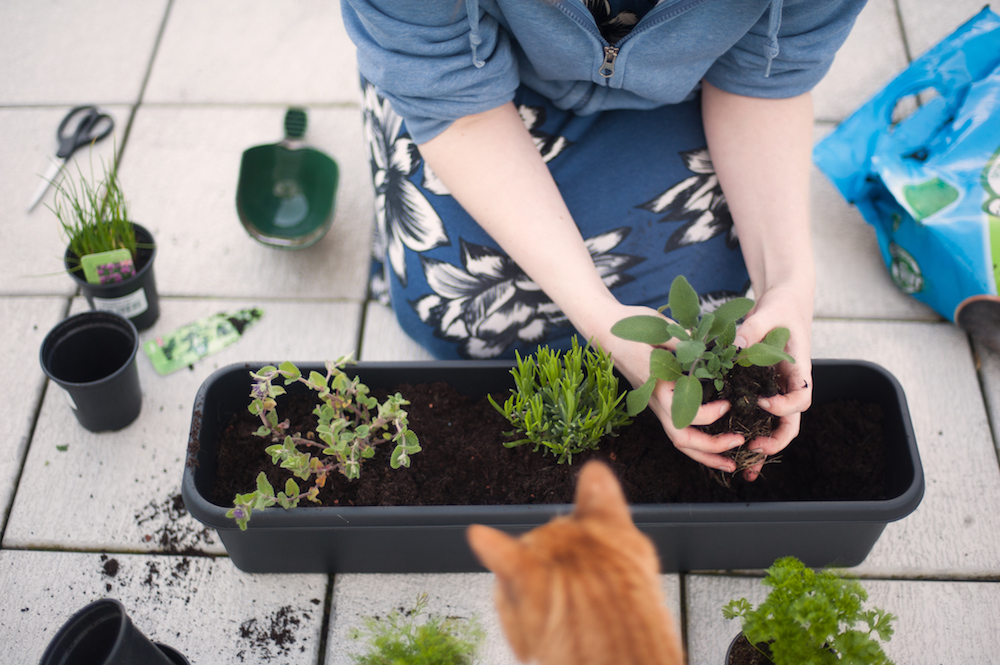
Buddy System
If you’re using a larger planter for your herbs, be careful when deciding which to plant together – you’ll want to group herbs that thrive in a similar environment (sun-loving herbs like sage, rosemary and thyme work great in one container, for example) and keep invasive herbs like mint on their own.
Related: This DIY Indoor Herb Garden Can Be Made in Six Easy Steps
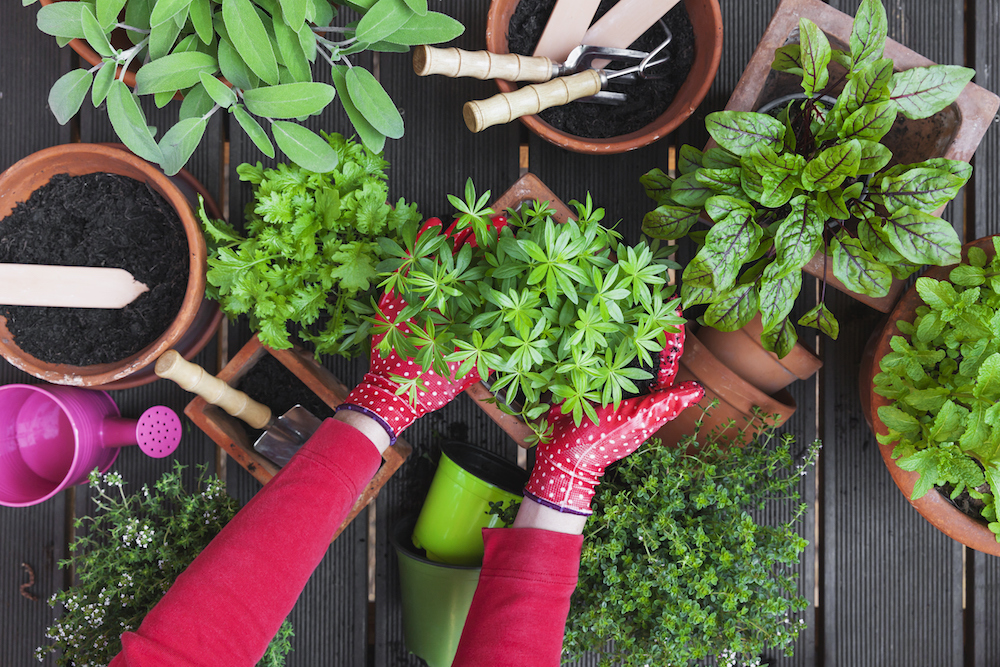
Get Equipped
Now that you know what you want to grow and where you want to grow it, it’s time to gear up for the job. You’ll need something to plant your herbs in (containers, pots or even a DIY planter like these that Sarah made for Backyard Builds), soil, fertilizer, a small shovel or trowel, a watering can and the herb seeds or seedlings you want to plant.
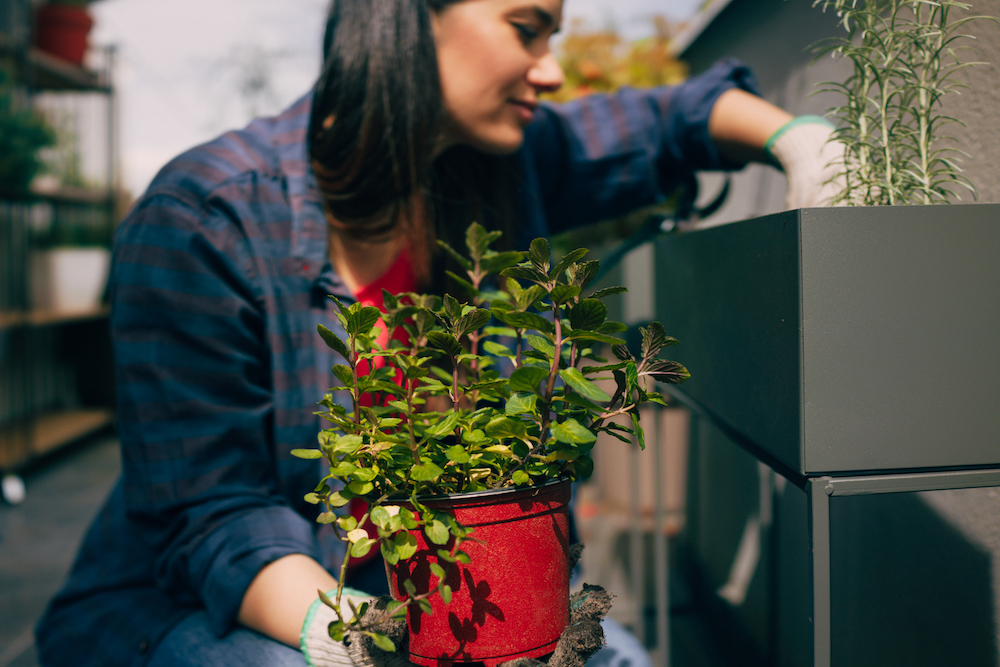
Space Out
Remember, plants need their space. Always read the seed pack (or planting instructions if you started from a seedling) and follow the directions for spacing for each particular plant so you don’t risk overcrowding.
Related: How to Keep Your Plants Alive While You’re on Vacation
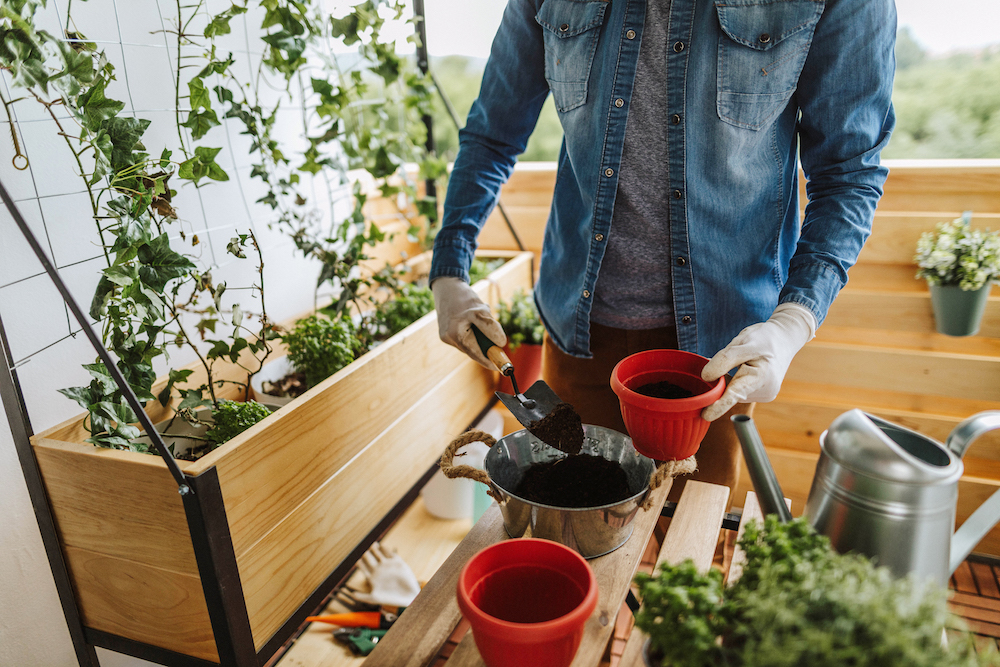
Soil Studies
You don’t necessarily need special dirt to DIY a herb garden (potting soil designed for growing in containers should do the trick), but it’s important that you pay attention to the soil’s quality and drainage. The roots of herbs that are native to hot, Mediterranean climates (like rosemary or lavender) need a well-drained, sandier soil or they’re prone to rot. If your soil isn’t up to snuff, consider adding compost or fertilizer to help.
Related: Gross Ingredients That Are Surprisingly Great for Your Compost
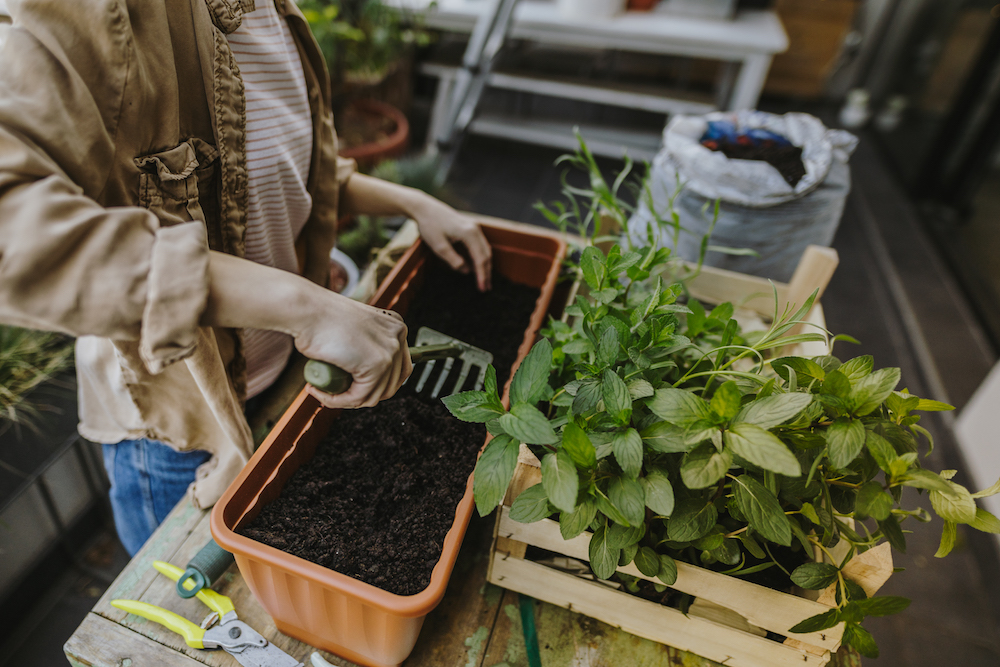
Herb-Planting 101
Before you plant your herbs, prepare the soil for success. Start by checking that your containers have drainage holes (if they don’t, add them to the bottom). Next, mark where you plan to plant each herb (based on the appropriate spacing you’ve pre-determined). If you’re using seedlings, plant each and cover the rootballs with a bit more soil. Water the planted herbs to help them settle and add more potting soil if needed.
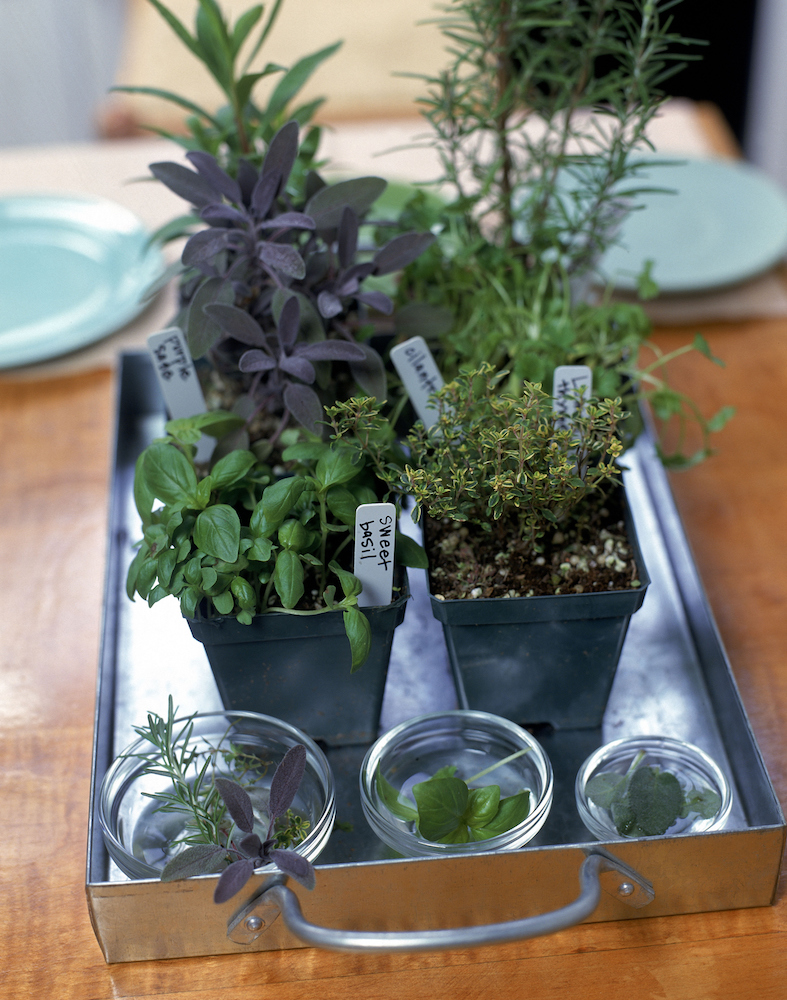
Mark Your Work
Even if you have a photographic memory, it’s a good idea to label your herbs (especially if you’re growing from seed). If you know what you’re dealing with, you’ll be better equipped to care for each type of plant as it grows.
Related: Make Your Garden Shine With These Rainbow-Bright DIY Plant Markers

Prepare for Pests
It’s sort of inevitable: when you grow something, you’re also putting the call out for pests – but don’t let that scare you away from gardening! There are plenty of natural ways to keep pests out of your garden. It’s a good idea to check for common pests (and how to avoid them) for the specific herbs you’re planning to grow, so that you can be prepared from the start. You can also use the trimmings of herbs like rosemary, sage and lavender as a natural way to keep pests away from your other plants.

Don’t Forget the Water
I know that this may seem obvious, but it’s also the easiest way to ruin a perfectly planted herb garden – you have to water it. How often? It depends on what you’re growing, but generally you should water your herbs whenever the soil is dry, which is likely once or twice a day (more often when it’s hot outside). Keep in mind that plants like water, but they also like to dry between waterings. It’s a cycle – if plants are always wet or always dry, they won’t survive – so set reminders on your phone so that you don’t forget to check.
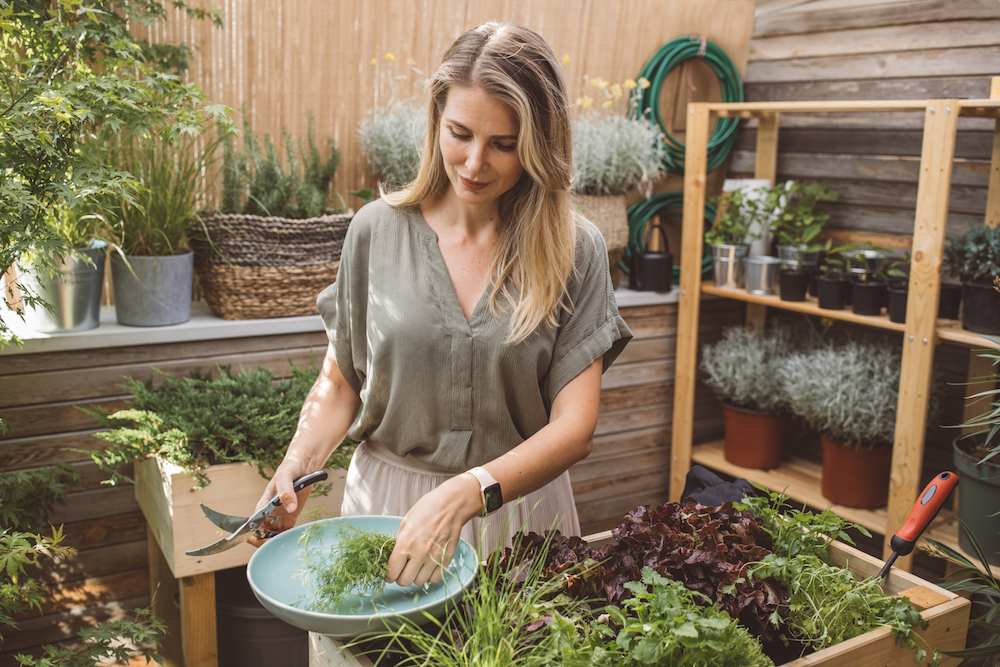
Harvest Away
Now that you’ve grown an amazing balcony herb garden, it’s time to eat! The best time to harvest your herbs is in the late morning (after any dew has dried) when they’re at their freshest.
Related: 15 Exotic Plants and Trees That Are Surprisingly Canadian
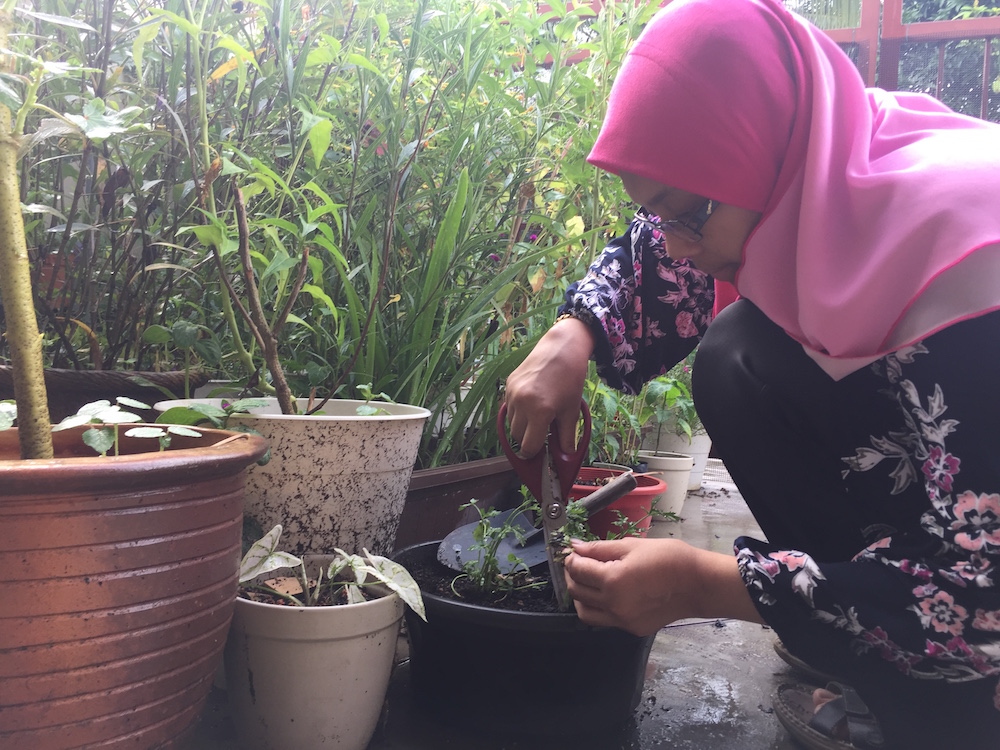
Prune Regularly
Good maintenance is key to keeping your home in order – and the same goes for your herb garden. Just as you’d prune your bushes and trees, regularly prune your herbs to help extend the length of their harvest.

Coffee Break
If you know that you’re going to eventually swap pots, make the move easier on yourself by using this trick: put a coffee filter in the soil before you plant your herb (of course, still cover it with soil). When it’s time to make the switch to a new, bigger pot, you’ll have a much easier time. If you’re truly a coffee lover, there are also a few other ways to repurpose your old coffee grounds to help your garden grow.
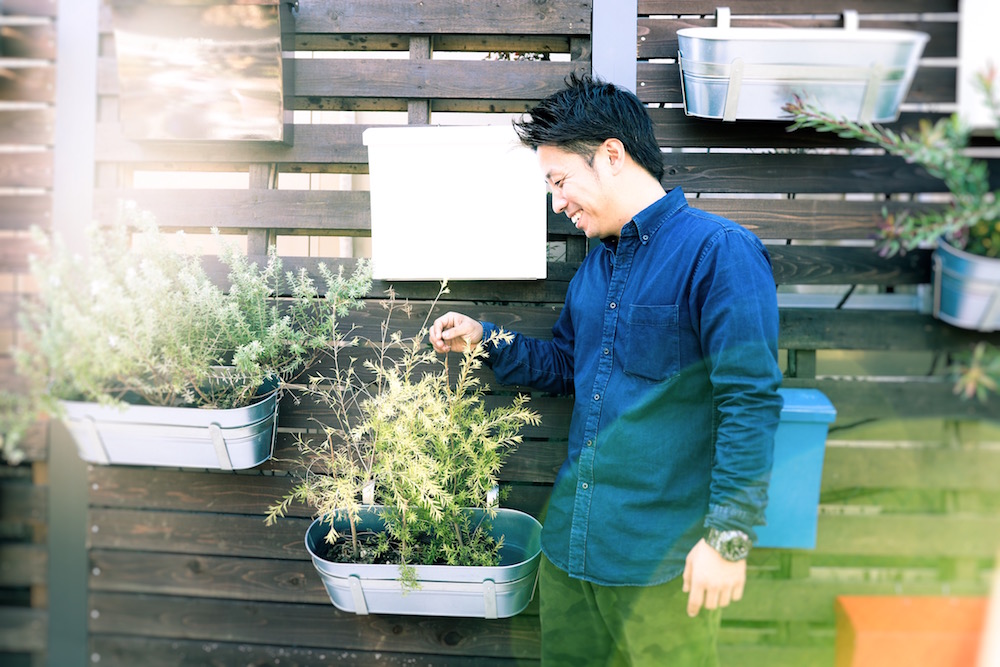
Go Vertical
Whether you’re growing herbs or anything on a smaller balcony, if space is an issue, change directions – literally. Creating a vertical gardening setup makes the most of a compact space and works well when growing smaller plants like herbs. If you want to DIY a vertical garden, check out this video for three ideas from Sarah and I.

Flower Power
If a herb garden or vertical garden isn’t your speed, opt for a variety of flowers in containers on your balcony. It is a timeless balcony gardening idea that’ll never go out of style.
Related: 15 Balcony and Front Porch Design Ideas We Want to Steal
HGTV your inbox.
By clicking "SIGN UP” you agree to receive emails from HGTV and accept Corus' Terms of Use and Corus' Privacy Policy.




